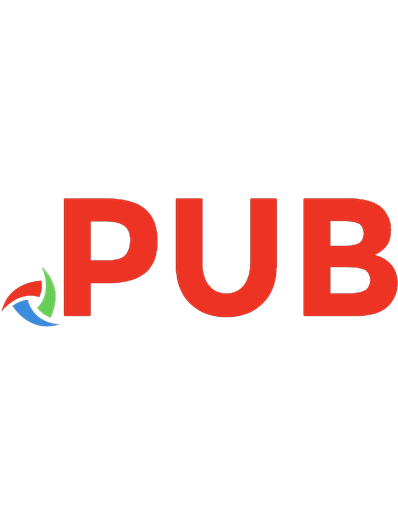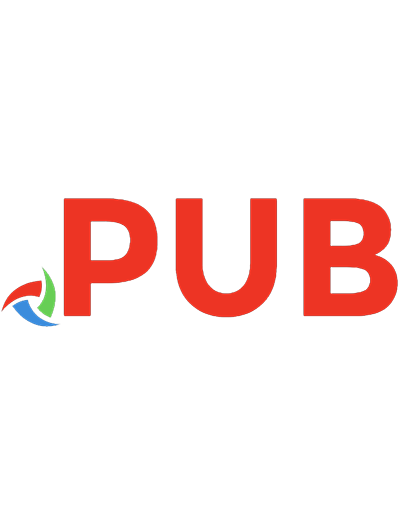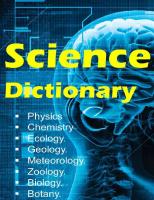Marshallese-English Dictionary 9780824887032
The Marshallese-English Dictionary contains almost 12,000 entries giving information on an estimated 30,000 Marshallese
152 101 52MB
English Pages 627 [625] Year 2021
Polecaj historie
Citation preview
MARSHALLESE-ENGLISH DICTIONARY
PALI LANGUAGE TEXTS: MICRONESIA Social Science Research Institute University of Hawaii Donald M. Topping Editor
MARSHALLESE-ENGLISH DICTIONARY TAKAJI ABO BYRON W . B E N D E R ALFRED CAPELLE TONY DEBRUM
University of Hawaii Press Honolulu
The publication of this book is subsidized by the government of the Trust Territory of the Pacific Islands. Copyright © 1976 by The University Press of Hawaii All rights reserved Printed in the United States of America 18
21
20
19
Library of Congress Cataloging in Publication Data Main entry under title: Marshallese-English dictionary. (Pali language texts : Micronesia) Bibliography: p. 1. Marshall language—Dictionaries—English. 2. English language—Dictionaries—Marshall. 3. Names, Geographical—Marshall Islands. 4. Marshall language— Etymology—Names. I. Abo, Takaji, 1936II. Series: Pali language texts. PL6255.Z5M3 499\5 76-26156 ISBN-13: 978-0-8248-0457-2 ISBN-10: 0-8248-0457-0
This is one in a series of dictionaries compiled and edited with the aid of a specially developed system of computer programs, which also formatted the text for composition and produced the tapes to drive a digital character-generating phototypesetter.
University of Hawai'i Press books are printed on acid-free paper and meet the guidelines for permanence and durability of the Council on Library Resources. Printed by Sheridan Books, Inc. www.uhpress.hawaii.edu
For the students and teachers in the schools of the Marshall Islands
CONTENTS
Preface
ix
Introduction 1. 2. 3. 4. 5. 6. 7.
xiii
How the Dictionary Was Compiled The Structure of an Entry xiv The Grammatical Key xvii The Sounds of Marshallese xxii Place Names xxvi Flora, Fauna, and Stars xxviii Finding Words in the Dictionary
8. The English Finder List Bibliography
xxxiv
xxxv
Marshallese-English Dictionary English-Marshallese Finder List
1 289
Place Names of the Marshall Islands
501
vii
xiii
xxix
PREFACE
Although this work represents the most complete collection of information on the words of Marshallese yet compiled, it is still far from a complete listing of all the words of the language. Nor is the information given for the words that have been included always complete or entirely accurate. But interest in the study of the language is probably greater today than ever before, and rather than delay publication any longer in the interests of completeness and precision, the authors offer it in its present form in the hope that its appearance may stimulate others to join in producing a more nearly complete future edition. Many of the words will appear in their usual form, while others will look familiar but changed slightly in various ways—by the inclusion of marks beneath some letters, by the use of one or two new letters, or by the use of different letters that more regularly and accurately show the sound of a word than others that have sometimes been used. These changes follow the recommendations made by a committee of Marshallese in 1971. Basically there are four changes: 1. Two consonant letters that have always been in the Marshallese alphabet but seldom used have been put to work to represent their intended sounds wherever they occur. These are the light p, and the light d (without an accompanying and redundant r), as in lap 'big' and dik 'small' (instead of lab and drik). 2. Two vowel letters that were not in the alphabet but were nevertheless sometimes used have been added to share the burden of representing the many vowel sounds of the language. These are the Q of tQ 'sugar cane' and the u of ulul 'adze'. Although the letter a was included in the alphabet to represent the sound of the vowel in a word such as ma 'breadfruit', this sound has also sometimes been written with e. Only a is used for this sound in this dictionary, since e is needed for two other vowel sounds, those of me 'which' and me 'fortress, fish weir'. 3. Double consonants and double vowels are written with double letters, so that a double t now distinguishes botta 'to bat' from bota 'butter', and a double a distinguishes maan 'pandanus leaf' from man 'brown coconut'. 4. Special marks beneath the letters I, m, and n are used to show when they have a heavy (eddo) sound as opposed to a light (emera) sound. Thus \e
ix
Preface 'Sir' is distinguished from le 'Ma'am', any 'your' from am 'our', and r\e 'that by you' from ne 'leg, foot'. It is not the authors' intention to propose one and only one correct spelling for each word. In fact, common alternative spellings are given for many words. Rather, they have attempted to show what the language would look like if the recommendations of the committee are eventually adopted. The final decision as to how the language should be written remains appropriately with those to whom this book is dedicated. The names of many places in the islands have been included in a special section at the end of the volume. (The names listed in this section are spelled as they might have been if the early mapmakers had themselves been speakers of Marshallese rather than some other language. But the intent is not to change the spellings on the maps, for Bikini, Eniwetok, Kwajalein, Majuro, Ebeye, and so forth, will no doubt remain the official spellings of the names of such places for many years to come.) On the other hand, very few names of people are included. This contrast in treatment of the names of places and the names of people seems appropriate for a society in which land is held dearly and each small tract named, while people's names are treated with great delicacy and seldom mentioned in their presence. The authors are deeply indebted to a number of organizations and people who have been of great help in compiling the lexical file on which the dictionary is based. Early work was supported in part by University of Hawaii Peace Corps Micronesia training projects, and by a grant from the University of Hawaii Office of Research Administration. The College of Arts and Sciences and the Social Sciences and Linguistics Institute (formerly the Pacific and Asian Linguistics Institute) have helped support the use of the University of Hawaii Computer Center from year to year. The participation of Lanlon Alik in 1971 and of the third author in 1971-1972 was made possible as part of the Pacific Language Development Program of the Culture Learning Institute of the East-West Center, under the coordination of Gregory Trifonovitch. Publication of the dictionary in this form has been made possible through a grant from the Government of the Trust Territory of the Pacific Islands. The scientific identification of flora and fauna was assisted by the scientists mentioned in section 6. Keypunching for the computer and other editorial tasks were carried out by Olga Caldwell, Cindy Dalrymple, Melody Moir Actouka, and Doreen Yamamoto. Their participation was supported by the Social Sciences and Linguistics Institute and the Department of Linguistics of the University of Hawaii. The authors are especially indebted to Donald M. Topping for organizing and guiding the overall project in which this and other reference works on Micronesian languages could be produced, for the help and encouragement
x
Preface received from him over the years, and for his editorial assistance as we approached publication. Finally, this dictionary could never have reached or appeared in its present form without much time, effort, and creative thinking on the part of Professors Robert W. Hsu and Ann Peters, who mediated between the authors and the computer. Lexicographers everywhere would do well to learn from them.
INTRODUCTION
1. How the Dictionary Was Compiled The project that has resulted in the publication of this edition of a Marshallese dictionary extended over the better part of ten years. It began in 1966 when the first and second authors, Abo and Bender, compiled the 2,000-word glossary that appeared in Spoken Marshallese (Bender 1969), a set of language lessons designed primarily to assist Peace Corps volunteers in learning the language. In preparing that glossary, Abo began by consulting what was known as the original Navy dictionary (Carr and Elbert 1945) and the later version of it (Feeney 1952). A card file was established that included all the words of that dictionary that were known by Abo. The words were written in a phonemic transcription (see section 4 below) that could later be converted to a standard spelling when such had been determined. English translations were included on each card, and grammatical information and example sentences were also included on many of the cards. Various forms of a word and closely related words were all written on the same card. Abo read through the Marshallese translation of the Bible and other materials written in Marshallese in search of additional words to be added to the file. The total number of cards in the file was about 4,500 at this point. DeBrum, the fourth author, who had helped write the early Peace Corps lessons in 1966, joined the dictionary project in 1967 and added hundreds of additional words that occurred to him. He also worked intensively on the scientific identification of the many fish names in the file. The entire file was placed in computer storage at the University of Hawaii in 1968 because of the many ways in which the computer could be of help to the project. The computer was able to alphabetize the entries automatically, and to print out new listings of the file without errors. It received new words as they were found and put them in their proper alphabetic places. Its greatest service was the automatic compilation of an English finder list (see section 8 below) from the English translations that were given for each word. By October 1968, the computer file contained almost 5,000 Marshallese entries and a total of over 6,000 English words in their finder list. The 2,000 most useful Marshallese words were selected for incorporation in the Spoken Marshallese glossary, and their accompanying finder list contained over 3,000 English words. The third author, Capelle, joined the project later that year and added more words that had been overlooked by the previous authors. Many of these were
xiii
Introduction
discovered by comparing the English finder list with the Thorndike-Barnhart Junior Dictionary. When a word from this English dictionary was not found in the finder list, it was either added as another possible translation for a Marshallese entry already in the file, or it reminded the third author of a Marshallese word to be added to the file. By the middle of 1973, there were 6,200 Marshallese entries, and 11,000 English words in the finder list. (There are more English words than Marshallese entries because one Marshallese entry usually contains a n u m b e r of different but related words.) Later in 1973, more than 3,000 names of places in the Marshallese islands collected by Bender (1963£>) were included, and other words continued to b e added up until the time of publication to increase the n u m b e r of Marshallese entries to the present total of almost 12,000. T h e name of yet a fifth co-author could have appeared on this dictionary with considerable justification. The late Johnny Silk spent many of his free hours during 1958 and 1959 helping Bender analyze the place names. This analysis helped uncover hundreds of older words that are contained in the place names. (Many of these appear in the dictionary labeled as "archaic.") His knowledge of the geography and lore of the islands was boundless, and has helped to enrich this work in many ways. 2. The Structure of an Entry A minimal entry consists of a Marshallese headword and an English translation or definition. Many entries contain additional information. The various types of information that may be included and their order are as follows: (Technical terms used in the following discussion are followed by a reference to the section of the Marshallese Reference Grammar [abbreviated MRG; Bender 1976] in which they are explained.) a. Headword. Each entry begins with a headword in italic type, and all entries are ordered according to the alphabetization of their headwords. O n e of the various words or forms of words included in an entry is selected as the headword of the entry. This is usually the word with the most basic form, one that does not have affixes or optional reduplications included in it. T h e infinitive forms of transitive verbs (MRG 3.4.8) are chosen as headwords, but where there are major differences between the infinitives and the transitive forms, a separate cross-entry is made with the transitive form as its headword. rqwijit (njijit). Transitive form of rr}tvijrr}ioij (rtjijrtjij). kan (kag). Transitive form of njona (njegay). kiil (kiyil). Transitive form of kkiil (kkiyil). The same is true of the construct forms (MRG 3.1.6) of some nouns. bawon (bahwen). Construct form of bao (bahwew). kituon (kitiwen). Construct form of koto (k










